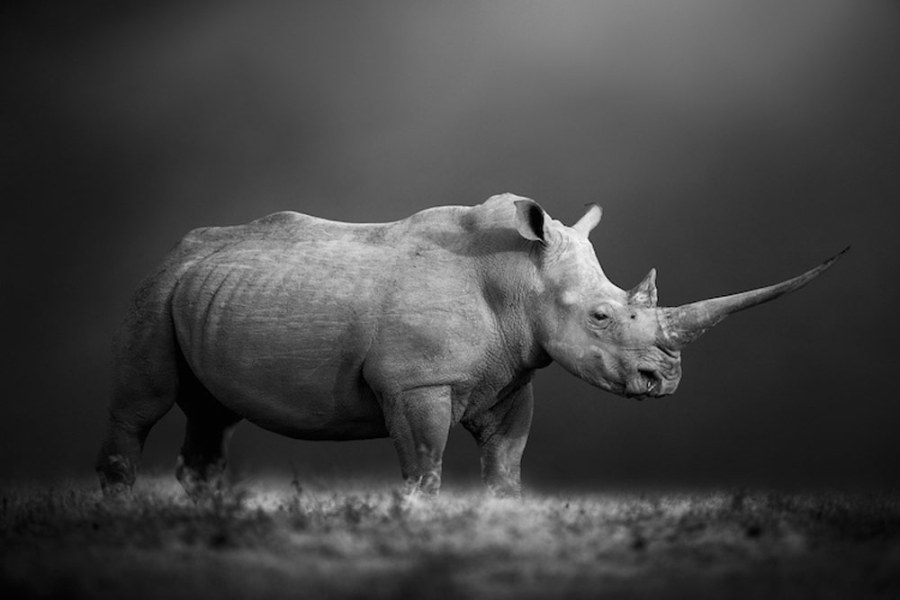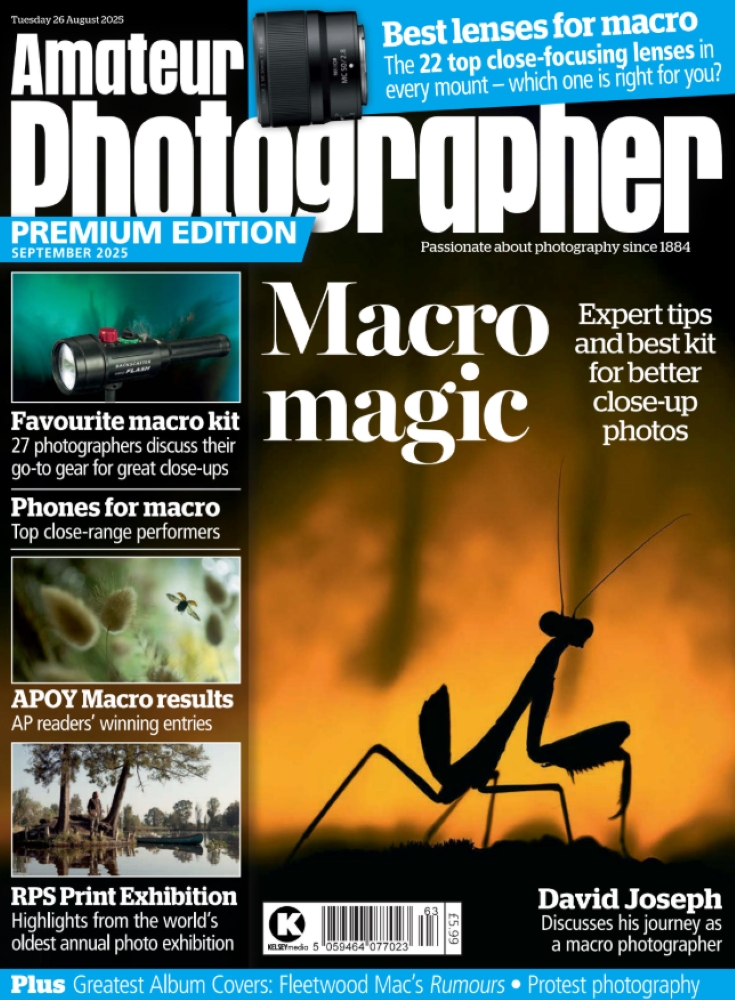Whatever camera you use, wildlife remains a hugely popular subject for many photographers and here’s a chance to buy a limited-edition print from some of the best wildlife specialists on the planet – at a good price.
This unique opportunity to buy a print from an acclaimed wildlife and nature photographer is part of the latest fundraiser by Prints for Wildlife. This year’s collection, labelled Edition Hope, will feature limited-edition prints donated by such big names as Joel Sartore, David Lloyd and Suzi Eszterhas.
Over $2.1million has been raised for conservation projects since Prints for Wildlife began in 2020; funds are needed more than ever, say the organisers.
They bleakly note how conservation programmes around the world are facing abrupt funding cuts and a possible future where nature is undervalued, threatening years of progress to protect biodiversity, ecosystems and the communities that depend on them for their livelihoods.
“In 2025, the crisis isn’t a virus – it’s a withdrawal of critical funding for wildlife and conservation,” said Pie Aerts, one of the co-founders of Prints for Wildlife. “Prints for Wildlife is more than a fundraiser – it’s a platform for connection, consciousness and hope in a time of crisis.”
The prints will be available for just one month, from today (21 August) to 21 September. Each print is reasonably priced at $125 (£93). Net proceeds (after printing and handling) will directly benefit Conservation International, a global non-profit working to protect nature for the benefit of people and the planet.
See here for full details and find out more about some of the fabulous prints on offer below.
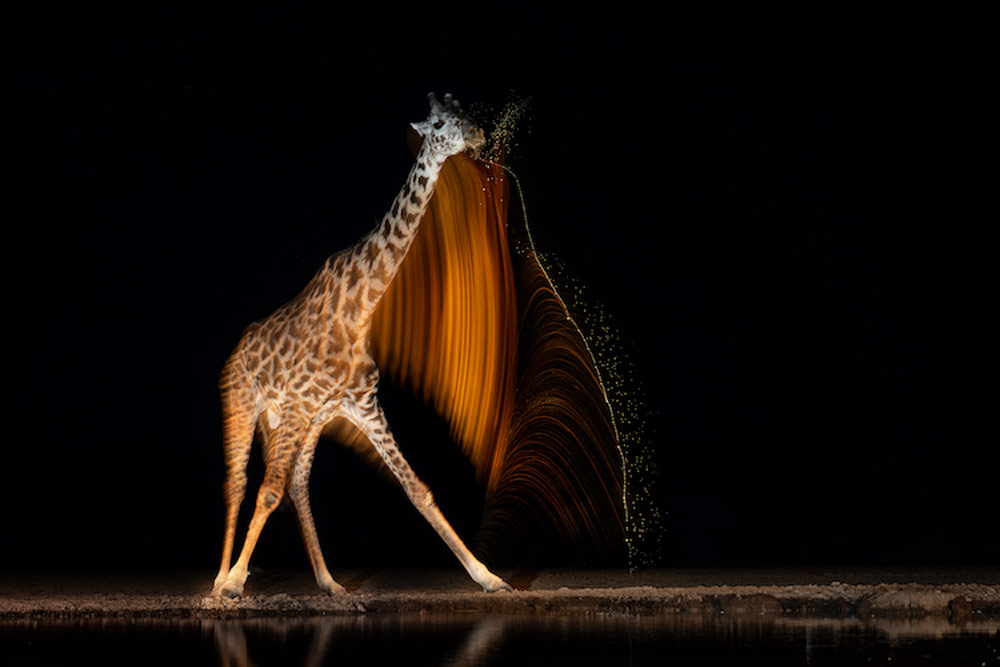
Gurcharan Roopra – A Brushstroke Of Gold
‘In the stillness of night at Shompole Community Land in Southern Kenya, deep in Magadi, Kenya, a Maasai Giraffe cautiously approached the water. Every movement was slow and deliberate. Photographing this moment meant waiting in silence, working in near-total darkness. With a long exposure and just a flicker of light, I captured the graceful arc of motion as it drank – a fleeting, almost mythical scene. One frame. One breath. The photo is a rare glimpse into the secret life of the wild.’
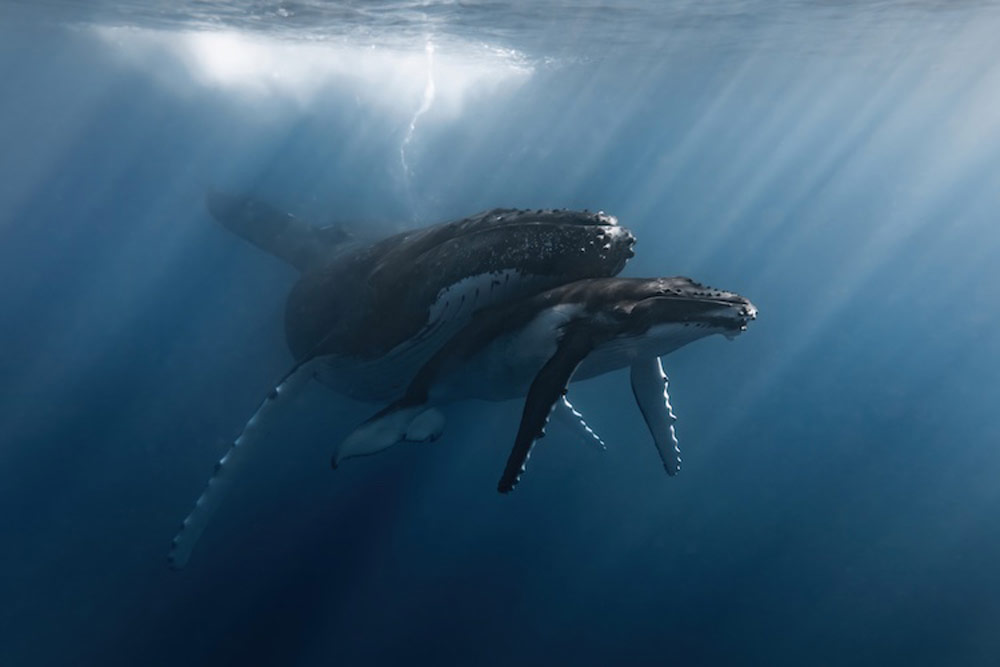
Rachel Moore – In Her Shadow
‘I captured this image in Mo’orea, a South Pacific island in French Polynesia. On this particular day, we had the privilege of entering the water to observe a mother and her calf resting at the surface. I was able to photograph this tender moment of the baby nestled beneath its mother. At this age, calves have limited control over their buoyancy and will often use their mothers like a weight belt to help them stay submerged and safe.’
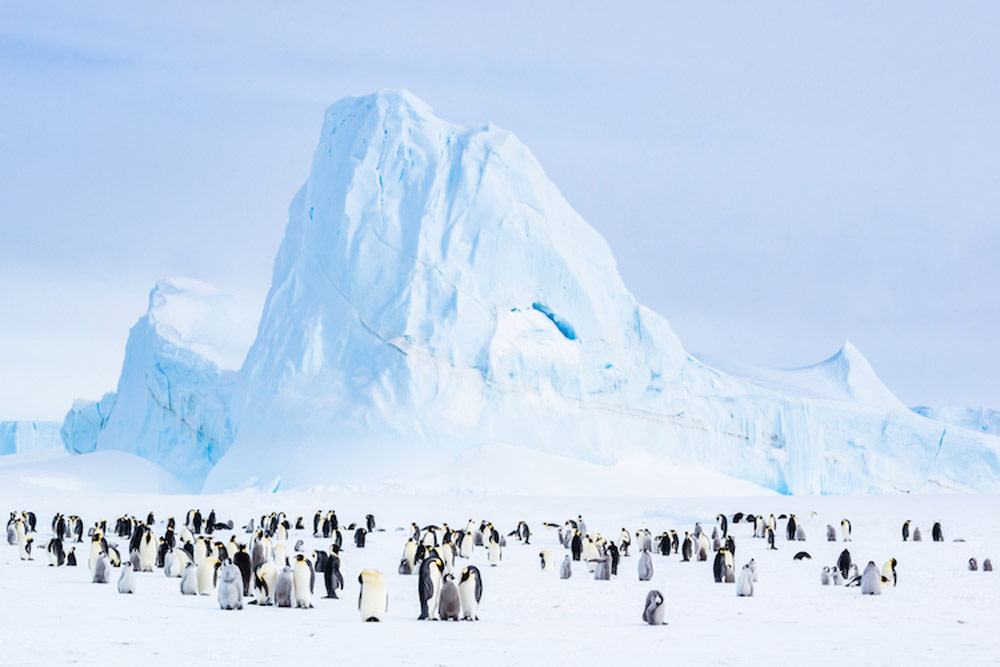
Stefan Christmann – The Sentinel
‘This photo shows the emperor penguin colony of Atka Bay, Antarctica, close to German Antarctic Research Station Neumayer-III, standing in front of one of the most prominent icebergs, which got stranded there in 2012. For its frowny face-shaped ice cave we called it “Sad Glacier”. Sad Glacier was a landmark that was used by both penguins and humans to gain orientation on the otherwise flat sea ice, especially during bad weather conditions.
During early summer, shortly before the annual sea ice break-up, Sad Glacier ungrounded and became mobile again. It eventually flipped upside down after the penguins had left the colony, as if its job had been accomplished. While I was sad about the fact that I would never get to see Sad Glacier again, it comforts me to know that after the flip, it was finally smiling.’
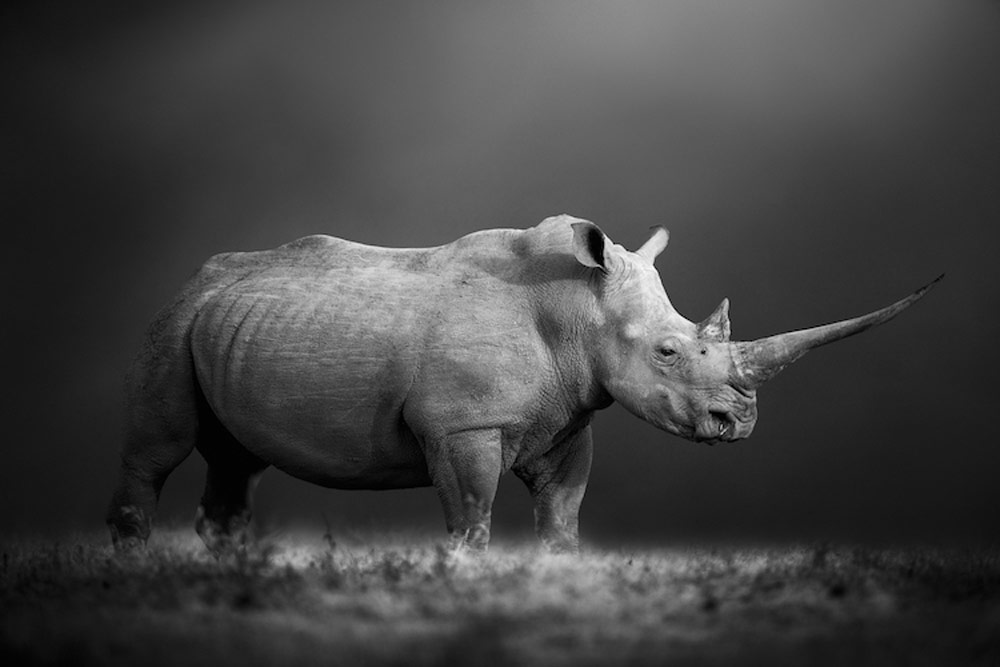
Bjorn Persson – Natural Power
‘A southern white rhino with an unusually long horn stands steadfast against a black backdrop, embodying nature’s unyielding power. This was taken in Solio Game Reserve, Kenya. I felt truly blessed to see such a majestic and rare creature, and it was as if I had been transported back in time to an era when dinosaurs roamed the earth.
Using a monochrome style, I intended to capture the animal’s raw power and ancient heritage. Due to poaching, only a few of these extraordinary giants remain in the wild. Poachers target the longest horns, and just one kilogram of rhino horn can be worth up to USD$60,000 on the black market.’

